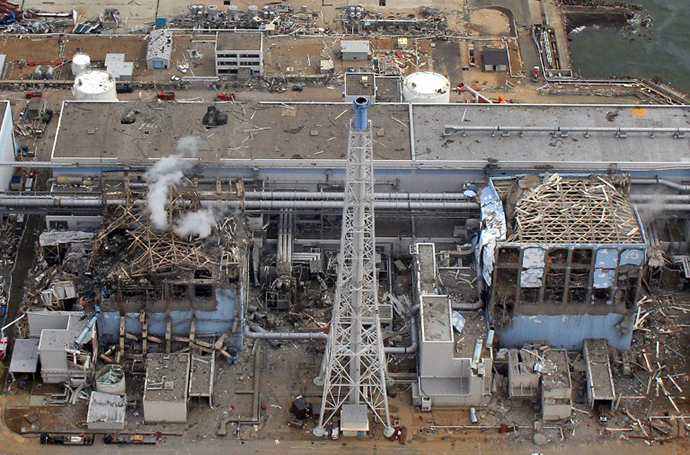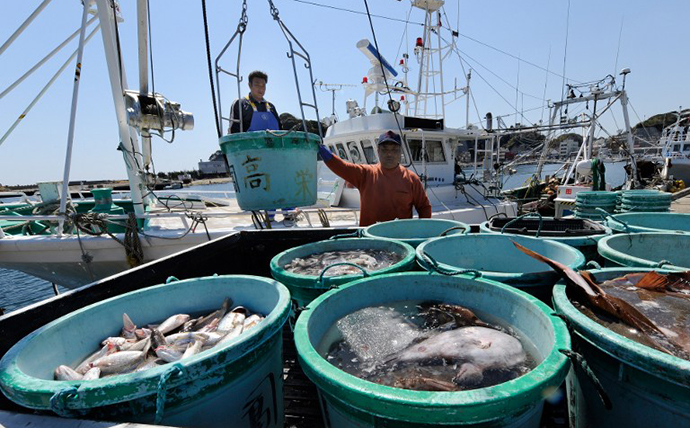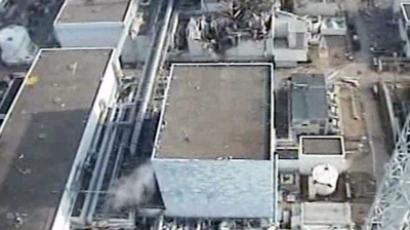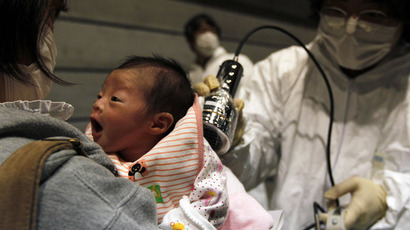Another radioactive leak found at Japan's Fukushima nuclear plant

A discharge of contaminated water has been discovered at the disabled Fukushima Daiichi nuclear plant. It is the latest in a string of incident hindering the clean up of the worst nuclear disaster since Chernobyl in 1986.
Tokyo Electric Power Co (Tepco), the owner of the wrecked plant,
said it discovered the leak on Wednesday, fueling yet more
criticism of the company as it seeks permission to release water
into the sea, Reuters reported.
Shunichi Tanaka, the head of Japan's new nuclear regulator,
created after its predecessor was discredited in the 2011
accident, told a news conference that Tepco should deal with the
situation “without delay.”
Japan’s regulator, however, did not regard the matter as serious,
he added.
The Fukushima Daiichi Nuclear Power plant suffered a reactor
meltdown and the release of radiation following the 9.0 magnitude
Tokohu earthquake - the most powerful earthquake ever to hit
Japan - that struck off the coast of Japan on March 11,
2011.

The earthquake unleashed a tsunami with waves of up to 14 meters
high (Fukushima was designed to handle up to 5.7-meter waves)
that knocked out emergency generators required to cool the
reactors.
Wednesday’s setback comes after Tepco revealed this week it had
detected radioactive caesium in groundwater flowing into the
plant, contradicting an early finding that contamination levels
around the facility were negligible.
About 400 tons of groundwater flows daily into the reactor
buildings, where it is mixed with highly contaminated water used
as coolant for the melted fuel. The realization that groundwater
is being contaminated before it enters the damaged reactor units
complicates Tepco’s efforts to convince local authorities that
the groundwater is safe enough to be dumped into the ocean.
The news also comes as a major political challenge to Prime
Minister Shinzo Abe, whose government is set on plans to export
Japan's nuclear technology.
The government ordered Tepco last week to increase storage
capacity of water tanks and build earthworks around the four
reactor buildings to control the flow of groundwater seeping into
the facility.
Leaks were discovered in underground storage tanks in April,
prompting Tepco to speed up the construction of stronger
above-ground containers. The leak discovered on Wednesday was
from one of the sturdier tanks, Reuters reported.
The power company is also seeking approval to dump 100 tons of
groundwater a day from the plant into the sea, a plan that
requires the consent of fishermen who are strongly against the
idea.

On May 30, Tepco told fishermen that radioactive caesium in the
groundwater was at a level that could not be detected.
But the results were inaccurate as they were skewed by using
procedures that failed to take into account the background
radiation at the damaged plant, Tepco told Reuters on Tuesday.
"We'll have to correct the way we analyse sample data,"
said Mayumi Yoshida, a Tepco spokeswoman.
The revised results continue to show radiation levels below what
Tepco views as the upper threshold for releasing groundwater -
one Becquerel of caesium per 137 per liter. A Becquerel is a
measure of radioactivity.
On December 21, 2011, the Japanese government released a
comprehensive program for the clean up efforts, which predicted
that the full clean up will take 40 years.














